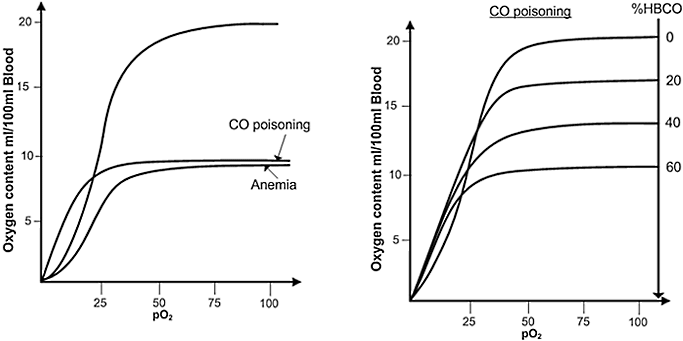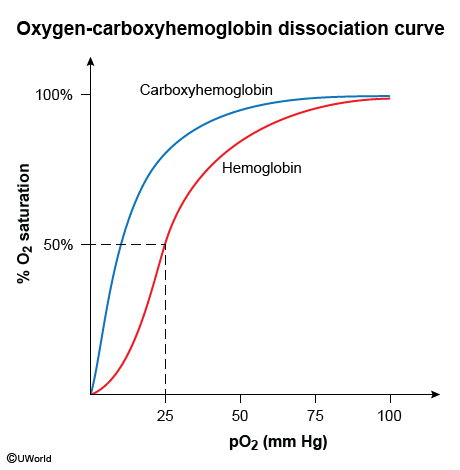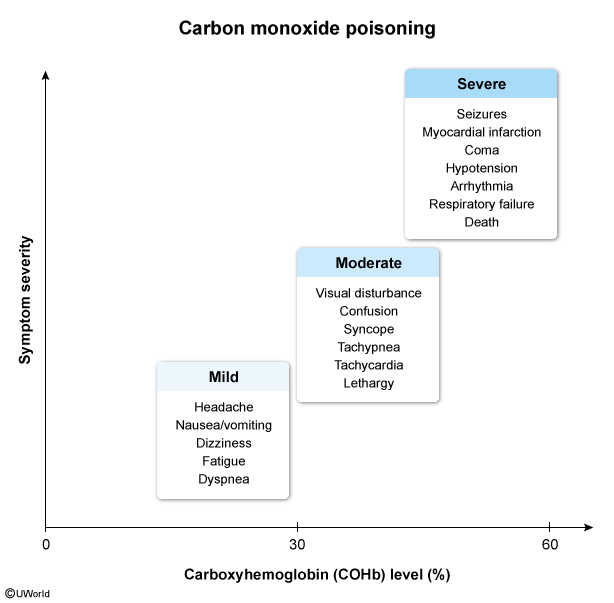Carbon Monoxide Poisoning
Article Sections
Introduction
Carbon monoxide (CO) poisoning is a potentially lethal condition caused by inhaling CO gas. CO binds to hemoglobin with great affinity, displacing oxygen to create carboxyhemoglobin. This limits the oxygen-carrying capacity of blood and decreases the release of oxygen into the tissues. CO also directly impairs oxygen utilization by the mitochondria. Manifestations of mild to moderate CO toxicity include headache, nausea, dyspnea, and malaise. Severe poisoning can cause syncope, seizure, coma, arrhythmia, and death. Diagnosis is confirmed by an elevated serum carboxyhemoglobin level, and treatment is immediate administration of 100% oxygen via a nonrebreather mask or within a hyperbaric chamber.
Risk factors
CO is a colorless, odorless, and tasteless gas produced by incomplete hydrocarbon combustion. Potential sources of CO exposure include:
- Smoke inhalation from a fire
Continue Learning with UWorld
Get the full Carbon Monoxide Poisoning article plus rich visuals, real-world cases, and in-depth insights from medical experts, all available through the UWorld Medical Library.
Figures


